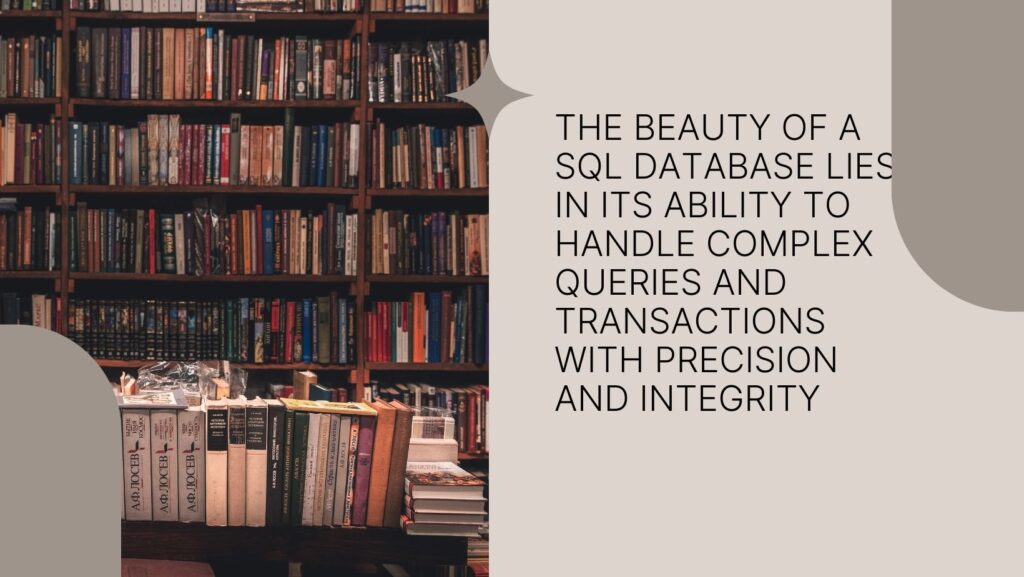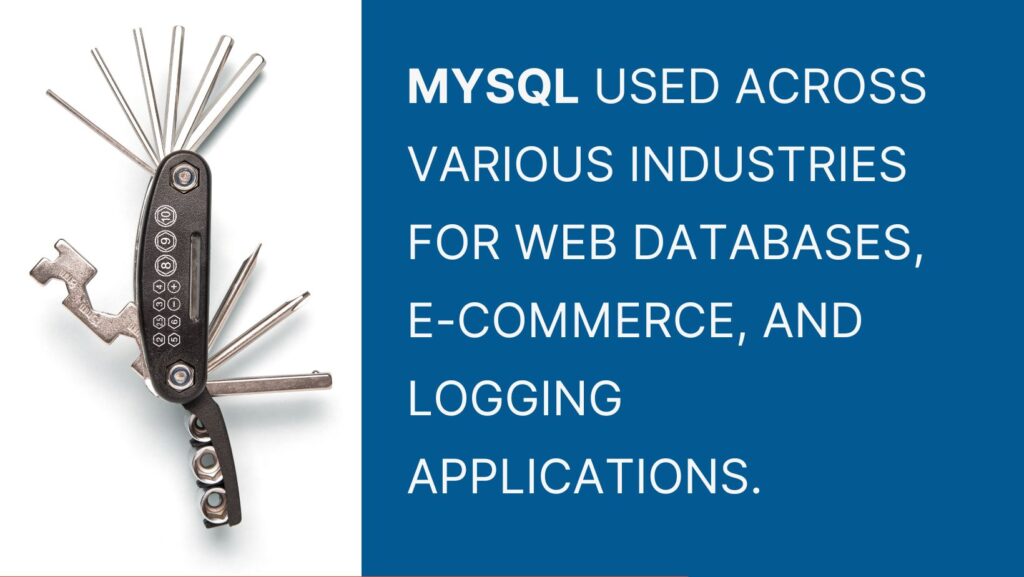
SQL databases are the bedrock of traditional database management. Their structured format, like a well-organized library, allows for efficient data retrieval and storage. These databases use a schema to define the structure of data, which includes tables, columns, and relationships. The beauty of a SQL database lies in its ability to handle complex queries and transactions with precision and integrity.

MySQL, a cornerstone in the SQL database world, combines reliability with widespread popularity. Think of MySQL as the Swiss Army knife in your toolkit – versatile, reliable, and time-tested. It’s used across various industries for web databases, e-commerce, and logging applications. Its ease of use and robust feature set make it a favorite among developers and corporations alike.
Visit: https://www.mysql.com/

NoSQL databases, the mavericks of the data world, break free from the rigidity of traditional SQL databases. They offer a flexible approach to data management, accommodating a variety of data models including document, key-value, wide-column, and graph formats. This flexibility makes NoSQL databases particularly adept at handling large volumes of diverse and unstructured data.

MongoDB is to NoSQL what MySQL is to SQL – a flagship technology. It’s like the multitool in the modern developer’s pocket, known for its agility and scalability. MongoDB is a document-oriented database, which means it stores data in JSON-like documents. This model enables seamless data integration for certain types of applications, particularly those requiring rapid development and scaling.
Visit: https://mongodb.com/
Picture SQL and NoSQL as two master chefs. SQL is the classical chef, precise and methodical, perfect for dishes requiring specific techniques. NoSQL, on the other hand, is the experimental chef who thrives in innovation and adapting to diverse culinary challenges.

The decision between MySQL and MongoDB hinges on your project’s specific requirements. If your application demands strict schema adherence, complex transactions, and relational data structures, MySQL is your go-to. Conversely, if you’re dealing with large-scale, unstructured data, or require rapid development with flexible schema design, MongoDB will serve you better.
In the fast-evolving world of technology, understanding the nuances between SQL and NoSQL databases is more crucial than ever. MySQL and MongoDB, each with their unique strengths and limitations, cater to different needs and scenarios. By considering the specific requirements of your project, you can choose the database technology that aligns best with your goals.